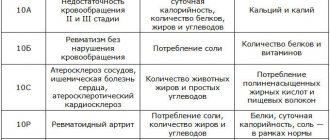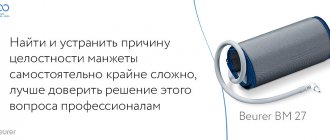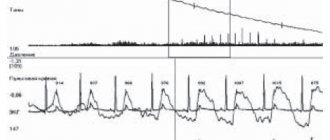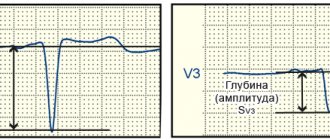Russia is one of the regions with the highest incidence of arterial hypertension (AH), which in the mid-90s of the last century was 39.9% among men and 41.1% among women, that is, about 42.5 million people. Moreover, hypertension ranks first in its contribution to mortality from cardiovascular diseases (CVD).
Most often, patients die from its complications. The relationship between blood pressure and CVD risk is continuous, constant and independent of other risk factors. In other words, the higher the blood pressure, the higher the risk of developing cardiovascular complications! Blood pressure measurement should be carried out both in people with hypertension and in healthy people. Some patients do not even feel the increase in pressure and end up in the hospital with complications.
If you have the following symptoms, you should measure your blood pressure:
-headache of a certain localization (usually temporal areas, back of the head);
-dizziness;
- headache accompanied by nausea, flashing before the eyes;
- heaviness in the occipital region of the head;
-noise in ears;
- feeling of a rush of blood to the face, redness of the face;
- heartbeat;
The optimal blood pressure is considered to be between 120 and 80 mmHg, and numbers up to 130 and 85 mmHg. are considered normal. If you repeatedly register blood pressure above the specified figures, you need to contact a physician or cardiologist. However, this does not mean that your blood pressure should be 120 and 80 mmHg. If you are hypotensive, and the usual numbers for you are 90 and 60 mmHg, then blood pressure is 130 and 85 mmHg. may cause the above symptoms and this condition also needs to be treated by a doctor.
How to measure blood pressure correctly? To measure blood pressure, the following conditions are important:
- Patient position
- Sitting in a comfortable position; hand on the table
- The cuff is placed on the shoulder at the level of the heart, its lower edge 2 cm above the elbow.
- Circumstances
- Avoid drinking coffee and strong tea for 1 hour before the test.
- Don't smoke for 30 minutes.
- The use of sympathomimetics, including nasal and eye drops, is excluded.
- The measurement is carried out at rest after a 5-minute rest. If the procedure for measuring blood pressure was preceded by significant physical or emotional stress, the rest period should be extended to 15-30 minutes.
- Cuff. It is advisable to choose the appropriate cuff size (the rubber part should be at least 2/3 of the length of the forearm and at least 3/4 of the circumference of the arm).
- The mercury column or tonometer needle must be at zero before starting the measurement.
- To assess the blood pressure level in each arm, at least three measurements should be taken with an interval of at least a minute, with a difference of 8 or more mmHg. 2 additional measurements are taken. The average of the last two measurements is taken as the final (recorded) value.
- To diagnose the disease, at least 2 measurements must be taken with a difference of at least a week.
- Quickly inflate the cuff to a pressure level of 20 mm Hg. exceeding systolic (by disappearance of the pulse).
- Blood pressure is measured with an accuracy of 2 mmHg. Art.
- Reduce the pressure in the cuff by 2-3 mm Hg. per second.
- The pressure level at which 1 sound appears corresponds to systolic blood pressure (1st phase of Korotkoff sounds).
- The pressure level at which the sounds disappear (phase 5 of Korotkoff sounds) is taken as diastolic pressure. In children and in some pathological conditions in adults it is impossible to determine the 5th phase, then you should try to determine the 4th phase of Korotkoff sounds, which is characterized by a significant weakening of the tones.
- If the tones are very weak, then you should raise your hand and perform several squeezing movements with the brush; then the measurement is repeated. Do not apply too much pressure to the artery with the membrane of the phonendoscope.
The advent of electronic tonometers greatly simplifies the process of measuring blood pressure. The requirements and rules for measuring blood pressure using an electronic tonometer are the same as for a mechanical one. The device itself pumps air into the cuff, releases it and records the data. If the tonometer is semi-automatic, you will have to pump air into the cuff yourself. If you measure your own pressure with such a device, under no circumstances do this with the hand on which the measurement is taken.
After each blood pressure measurement, it is necessary to record the readings in a diary. At a minimum, it is advisable to do this 2 times a day. If you have any symptoms during the day, and you measured your blood pressure, you can also write it down in a diary indicating not only the numbers, but also the symptoms.
Keeping a blood pressure diary helps the doctor make the correct treatment adjustments. So that the maximum effect of the drug occurs precisely at the time when you have high blood pressure. It is not recommended to change the dosage of the drug on your own or stop taking it. If you have any questions, consult your doctor.
If you have any questions, you can ask on the forum, in the topic “BP control and diary keeping.”
References:
- VNOK. National guidelines for the diagnosis and treatment of arterial hypertension 2010
- Epidemiology of arterial hypertension in Russia: portrait of a patient. Journal "Arterial Hypertension" 2(2) 2008
Blood Pressure Control
Blood pressure at rest should not exceed 135/85 mmHg.
It is impossible to feel an increase in blood pressure, which is why many patients with arterial hypertension are not even aware of their illness.
The only way is to regularly measure your blood pressure.
When performing physical activity, blood pressure increases, and this is a reflection of the body's normal, physiological response to stress. Therefore, in order to detect arterial hypertension, blood pressure is measured at rest. Blood pressure is recorded as two numbers (for example, 120/70 mmHg) - the first number (systolic pressure) indicates the pressure in the arteries during the heart's contraction (called "systole"), the second number (diastolic pressure) indicates the pressure during relaxation of the heart muscle (“diastole” of the heart).
Blood pressure is measured using a device called a tonometer. Tonometers are automatic, they are quite convenient to use, however, the accuracy of measuring pressure with automatic tonometers is usually inferior to the method of measuring blood pressure used by doctors.
Rules for measuring blood pressure:
It is advisable to measure blood pressure at the same time of day.
Blood pressure is measured at rest - usually in a sitting position, after 5-10 minutes of rest.
In order to measure blood pressure using the Korotkoff method, you must have a special inflatable cuff with a pressure gauge and a phonendoscope.
The blood pressure cuff is placed on the shoulder. It is important that the cuff size matches the patient's shoulder size. The cuff is applied so that its lower edge is 1-2 cm above the elbow. The head of the phonendoscope is installed in the elbow bend, and headphones are inserted into the ears. Then, using a bulb, they begin to inflate the cuff. The cuff is inflated until the pulse in the wrist artery disappears (it is advisable that the pressure in the cuff exceeds the pressure at which the pulse in the wrist disappears by about 20 mmHg after the pulse disappears).
After this, the air is gradually released and the cuff is deflated. Once the pressure in the cuff equals the pressure in the artery, pulse sounds can be heard through the headphones of the stethoscope. The pressure in the cuff at the moment the first pulse sound appears will correspond to the systolic blood pressure.
As air deflates from the cuff, the pressure in it decreases and soon pulse sounds cease to be heard. The pressure in the cuff at the moment the pulse sounds disappear corresponds to diastolic blood pressure.
For greater accuracy, it is advisable to measure the pressure several times (2-3 times) with an interval of 2-3 minutes.
People with hypertension are advised to measure their blood pressure daily and record the readings in a diary.
Indications for the 24-hour blood pressure monitoring procedure
As noted above, the ABPM procedure is often indicated for working people, without specifying age. The purpose of such an examination is to detect the slightest changes in blood pressure during the day. Patients are even recommended to keep diaries where they should record the events of the day: from waking up to going to bed. This allows the doctor to further determine what exactly - what stress or emotional experiences - is associated with an increase or decrease in pressure.
There are many objective reasons for monitoring:
- blood pressure control in patients suffering from hypertension;
- initial analysis of the condition of a patient who has consulted a doctor;
- presence of diabetes mellitus;
- frequent stress, depression;
- taking medications to lower blood pressure;
- sleep apnea syndrome (short-term cessation of breathing during sleep);
- the presence of pathologies of the autonomic system;
- complaints of increased blood pressure during certain periods of daily activity;
- suspicion of severe late toxicosis during pregnancy (preeclampsia);
- choosing the optimal type of delivery for a pregnant woman with severe hypertension;
- preventive monitoring of the health of the working population;
- examination of conscripts.
Carrying out the ABPM procedure
Blood pressure monitoring can be performed in a hospital or clinic. For this purpose, the patient is invited to come early in the morning. After the traditional blood pressure measurement, the patient is put on a device for daily monitoring of readings. For right-handed people, the cuff from the device is attached to the left hand, for left-handed people - vice versa. The device itself can be attached to a belt or shoulder. If it is necessary to simultaneously record a cardiogram, appropriate electrodes are attached to the chest.
Equipment for ABPM is configured in a special way. It independently pumps air after a certain time, usually once every half hour during the day and once per hour at night. During these periods, patients need to relax, lower their hand down and wait until the end of the measurement. If unpleasant symptoms appear, the patient can press a button on the device outside of the specified schedule, and the measurement will take place unscheduled.
During the procedure, the patient keeps a diary. There he should record the time of eating, the slightest stress, and unpleasant symptoms. The entries might look something like this: “I went up to the second floor, ate an apple, felt pain in my heart.” The time is shown next to it.
The next morning, the device is removed, the information is transferred to a computer for data decoding and analysis by a doctor.
Synergy of two molecules: blood pressure under control 24/7
EGP 07.29.2020/5
One of the most common questions patients ask a cardiologist: can blood pressure (BP) change significantly during the day even during therapy? It would be correct to remind the patient that, according to the results of 24-hour blood pressure monitoring (ABPM), he was assigned to one of the following groups [1]:
- Dippers are patients with normal nighttime blood pressure reduction (i.e., by 10-20% of daytime values);
- Non-dippers are people whose blood pressure decreases by less than 10% at night;
- Over-dippers - a decrease in blood pressure at night exceeds 20%;
- Night peakers are patients with paradoxical nocturnal rises in blood pressure.
Patients of the last three groups require a particularly careful approach to antihypertensive therapy to achieve physiological proportionality of changes in blood pressure at night/day, because diurnal variability of blood pressure is associated with a high risk of target organ damage [2]. This is possible through the use of antihypertensive drugs that act for 24 hours: according to current clinical guidelines, for this it is necessary to prescribe combination therapy, preference is given to fixed combinations [3,4].
The clinician is faced with a difficult choice: to recommend the patient the necessary medications in two different preparations, or to prefer a fixed combination of them? The first option makes you think about adherence to therapy, because, according to studies, only 3.3% of patients take antihypertensive drugs as recommended by the doctor [5], and any complication of the regimen is fraught with a decrease in adherence to treatment. Today there are combination drugs containing fixed doses of active substances. An example of such a drug from a reputable manufacturer is Egipres ®.
Egipres ® [6] is the only fixed combination of the ACE inhibitor ramipril and the dihydropyridine AK amlodipine, available today to Russian doctors and patients. The drug is presented in the following combinations of doses of amlodipine and ramipril: 5 mg + 5 mg, 5 mg + 10 mg, 10 mg + 5 mg and 10 mg + 10 mg, respectively. Due to the characteristics of pharmacokinetics, the antihypertensive effect of ramipril appears 1-2 hours after administration and reaches a maximum after 2-4 hours [6]. The effect of amlodipine develops more slowly and persists for 24 hours [6]. The synergy of two molecules in one tablet allows you to achieve a decrease in blood pressure during the day [7,8].
A domestic study showed that by the 12th week of treatment, a gradual decrease in daytime and nighttime blood pressure variability was observed [9]. The phase IV RAMONA trial [7,8], which included 6423 participants, demonstrated that blood pressure control was significantly improved after 4 months of treatment with a fixed-dose combination of ramipril and amlodipine in patients with high cardiovascular risk factors. And, what is very important, in 52.1% of patients who had previously received antihypertensive therapy, but did not reach the target blood pressure level (<140/85 mm Hg), treatment with a combination of fixed doses of ramipril and amlodipine ( Egipres ®) for 4 months still allowed us to achieve target blood pressure values [7,8].
Literature
- Staessen JA, Fagard R, Thijs L, Amery A. Fourier analysis of blood pressure profiles // Am. J. Hypertens. 1993. Vol. 6. P. 184–187.
- Sega R, Corrao G, Bombelli M, et al. Blood pressure variability and organ damage in a general population: results from the PAMELA study (Pressioni Arteriose Monitor E Loro Associazioni). Hypertension.2002;39:710-4.
- Russian Cardiological Society. Arterial hypertension in adults. Clinical recommendations of the Ministry of Health of the Russian Federation, 2021.
- 2018 ESC/ESH Clinical Practice Guidelines for the management of arterial hypertension.
- Oganov R.G., Pogosova G.V., Koltunov I.E. and others. RELIEF - Regular Treatment and Prevention - the key to improving the situation with cardiovascular diseases in Russia: results of a Russian multicenter study // Cardiology. 2008. No. 4. pp. 58–66.
- Instructions for use of the medicinal product for medical use Egipres®, GRLS of the Ministry of Health of the Russian Federation, 03/18/2014 LP-002402.
- Ostroumova O.D., Zykova A.A. Efficacy of the fixed combination ramipril/amlodipine in the treatment of arterial hypertension, chronic kidney disease and diabetes mellitus. Journal "Medical Council" No. 13, 2021.
- Tomcsany JA Ramiprilés Amlodipin kombináció vérnyomáscsökkentô hatékonyságának Monitorozása és beavatkozással Nem járó Adatgyûjtése (RAMONA tanulmány). Hypertonia és Nephrologia 2013;17:49–96.
- Korennova O.Yu., Podolnaya S.P., Prikhodko E.P. et al. Antihypertensive efficacy of a fixed combination of amlodipine and ramipril in patients with arterial hypertension and very high cardiovascular risk. Antihypertensive efficacy of a fixed combination of amlodipine and ramipril in patients with arterial hypertension and very high cardiovascular risk. Rational Pharmacotherapy in Cardiology 2018;14(6). pp. 840-845.
The material is intended for medical workers.
Can the procedure be performed on children?
In childhood, blood pressure monitoring is carried out from the age of 7 years. Often the procedure is done in conjunction with round-the-clock ECG recording. Indications for ABPM in childhood:
- hypertension;
- hypotension;
- periodic cases of loss of consciousness;
- heart rhythm disturbance.
The ABPM examination method for children is not fundamentally different from that used for adults. The only difference is that the details should be explained to the child in more detail, emphasizing the need to wear the device all day and night.
Determining the limits of normal blood pressure for children is quite difficult. Indicators may differ depending on age, height, physical activity, and somatic type. During the period of hormonal changes, blood pressure levels may fluctuate. In particular, for a tall child the norm can be considered a pressure of 120/80; for a short child this is too high.
Decoding the results
24-hour blood pressure monitoring is an effective method of obtaining information about systolic and diastolic pressure during the night and day. The results of the examination can be found out immediately or the next day after the procedure. A set of readings will be recorded on the results sheet.
- Graph of pressure changes during the day.
- Average systolic pressure during the day.
- Average diastolic pressure during the day.
- Average systolic pressure at night.
- Average diastolic pressure at night.
- The degree of fluctuation in systolic and diastolic pressure at night.
- Blood pressure variability.
- The difference between the upper and lower pressure is the mean pulse arterial pressure.
Normal or not?
| Mean systolic blood pressure | Mean diastolic blood pressure | |||
| During the daytime | At night time | During the daytime | At night time | |
| Low blood pressure | less than 100 | less than 90 | less than 65 | less than 50 |
| Normal blood pressure | 100–135 | 90–120 | 65–85 | 50–70 |
| Borderline hypertension | 136–140 | 121–125 | 86–90 | 76–85 |
| Hypertension first degree (mild) | 141–155 | 126–135 | 91–100 | 76–85 |
| Second degree hypertension (moderate) | 156–170 | 136–150 | 101–110 | 86–100 |
| Stage 3 hypertension (severe) | more than 170 | more than 150 | more than 110 | more than 100 |
It is normal for blood pressure to drop by about 20% at night. If this condition is not observed, there may be health problems. Insufficient reduction may indicate the following ailments.
- Chronic kidney disease. If not treated appropriately, it can lead to hypertrophy of the left ventricle of the heart.
- Tumor in the adrenal glands (pheochromocytoma). Without proper treatment, this condition over time can lead to chronic cardiac ischemia and angina attacks.
- Diabetes mellitus, which leads to myocardial infarction.
- Neuroses and insomnia, which can cause a stroke.
The difference between systolic blood pressure and diastolic blood pressure is called pulse pressure. It should not be more than 53 mmHg. Art., and it is better if it is 30–40 mm Hg. Art. High pulse pressure may indicate thyroid disease or vascular problems. Patients who have high pulse pressures are at risk for complications caused by hypertension.
Blood pressure variability is the degree of change in blood pressure per day. The normal value for systolic blood pressure is a maximum variability of 15 mmHg. Art., for diastolic - no more than 12. High variability indicates weak elasticity of blood vessels. This condition increases the risk of retinal hemorrhages and stroke.








